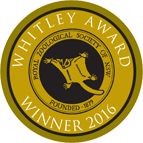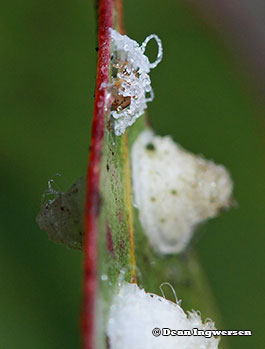
Swift Parrot & Regent Honeyeater Conservation
Birdlife Australia hold a biannual survey
3rd weekend in May and the 1st weekend in August
Regent Honeyeaters and Swift Parrots are both critically endangered birds that are endemic to the temperate forests and woodlands of south-eastern Australia. Although their breeding habits are very different, both have adapted to seek out the richest nectar-producing Eucalypt trees when they are in flower. Thus, their distributions fluctuate and move in response to where the greatest concentrations of blossom occur. Both will also feed on ‘lerp’; the sugary substance that some leaf insects protect themselves with (which is a very high source of energy). Swift Parrots in particular are quite partial to lerp as a high-energy food source and can sometimes be found on the edge of Bell Miner colonies, where lerp is plentiful.
However, both species seek out blossoming Eucalypt trees that occur in high quality woodland and dry forest environments. Since European settlement though, the vast majority of these woodlands and forests have been cleared to make way for agriculture and human settlement. These are the woodlands that occur on fertile soils in generally flat terrain and that generally do not occur in conservation reserves. Much of the remnants that were spared are now fragmented and open to the range of associated “edge effects” that occur in these situations. Probably the most serious of these threats are impacts of aggressive native birds, such as Noisy Miners, that drive these threatened birds (in particular Regent Honeyeaters) away from woodland remnants.
Both species are now listed as Critically Endangered under Commonwealth and IUCN threatened species criteria. The Regent Honeyeater has been listed as Critically Endangered in NSW for several years, which is of great concern as NSW contains the vast majority of the remaining population of this iconic woodland bird species.

Swift Parrots are migratory, breeding only in Tasmania then flying to the south-eastern mainland in autumn/winter where they seek out food resources in the areas described above. They start arriving in NSW and the ACT generally in April (earlier in Victoria) and can persist as late as October. If there is significant blossom available in Victoria many birds will not migrate further north. In some years however (e.g. 2014) birds will travel as far north as the southern Queensland coast. The Swift Parrot in fact makes the largest migration of any parrot in the world. In recent times, a potentially catastrophic threat has been identified on their Tasmanian breeding grounds, being the predation of eggs and incubating adults by Sugar Gliders; a Australian native mammal that does not occur naturally in Tasmania. Research by the Australian National University continues to monitor this threat and recovery actions are being implemented.
Regent Honeyeaters are not strictly migratory, but could be best described as “predictably nomadic”, moving from areas where they have spent the spring/summer nesting season to regions where blossom is plentiful during autumn/winter. Such areas include the grassy White Box forests and Box Ironbark woodlands of the western slopes of NSW, the sub-coastal Spotted Gum-Ironbark forests of the Far South Coast and Hunter Valley and the Swamp Mahogany forests along the coastal fringe. Swift Parrots also occur in these same broad habitat types (though both species will of course be found in other habitats if conditions are suitable).

Photo Dean Ingwersen
Regent Honeyeaters breed predominantly on the western slopes and upper reaches of drier coastal catchments (such as the Hunter Valley) and will often nest along watercourses where mistletoe is present in River Oaks. It is generally accepted that the breeding stronghold for Regent Honeyeaters is the Capertee Valley, north of Lithgow, though other important areas include the Bundarra-Barraba area, the Upper Hunter Valley and the north-eastern corner of Victoria. Occasionally they will also breed close to the coast (e.g. a significant breeding event occurred near Cessnock in 2007/08).
Both species have national Recovery Plans that provide guidance for ways to reverse the serious declines that they have suffered to date. BirdLife Australia is involved in the recovery of both species (especially Regent Honeyeaters) and more information can be found at the link below. It is important to report all sightings of Regent Honeyeaters and (mainland) Swift Parrots to BirdLife Australia (details provided in the link below).
http://birdlife.org.au/projects/woodland-birds-for-biodiversity
Mick Roderick
Project Coordinator,
‘Woodland Birds for Biodiversity’,
BirdLife Australia












